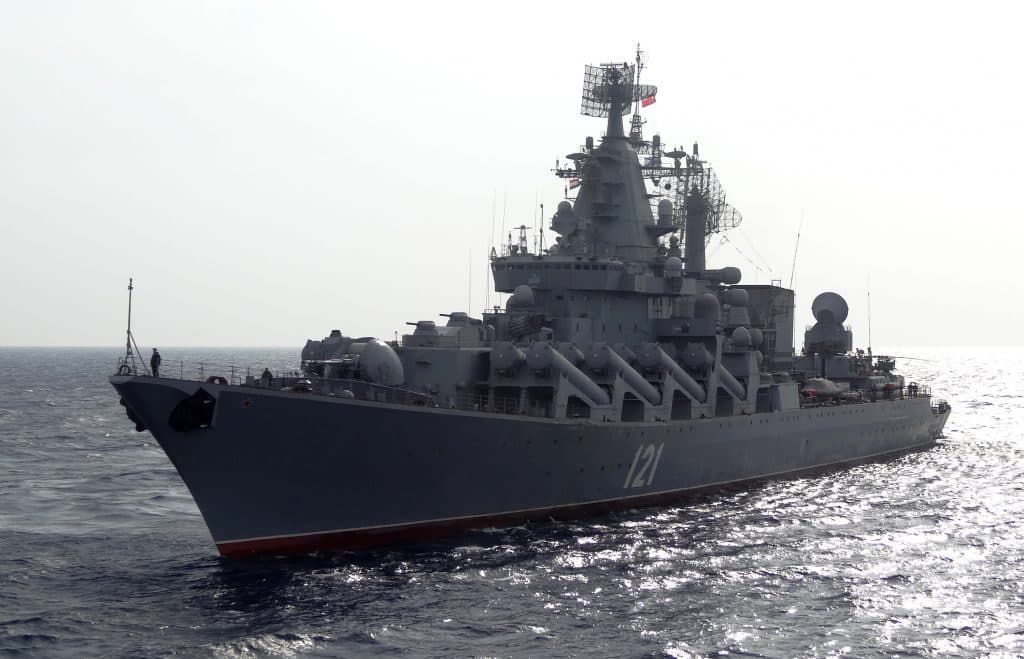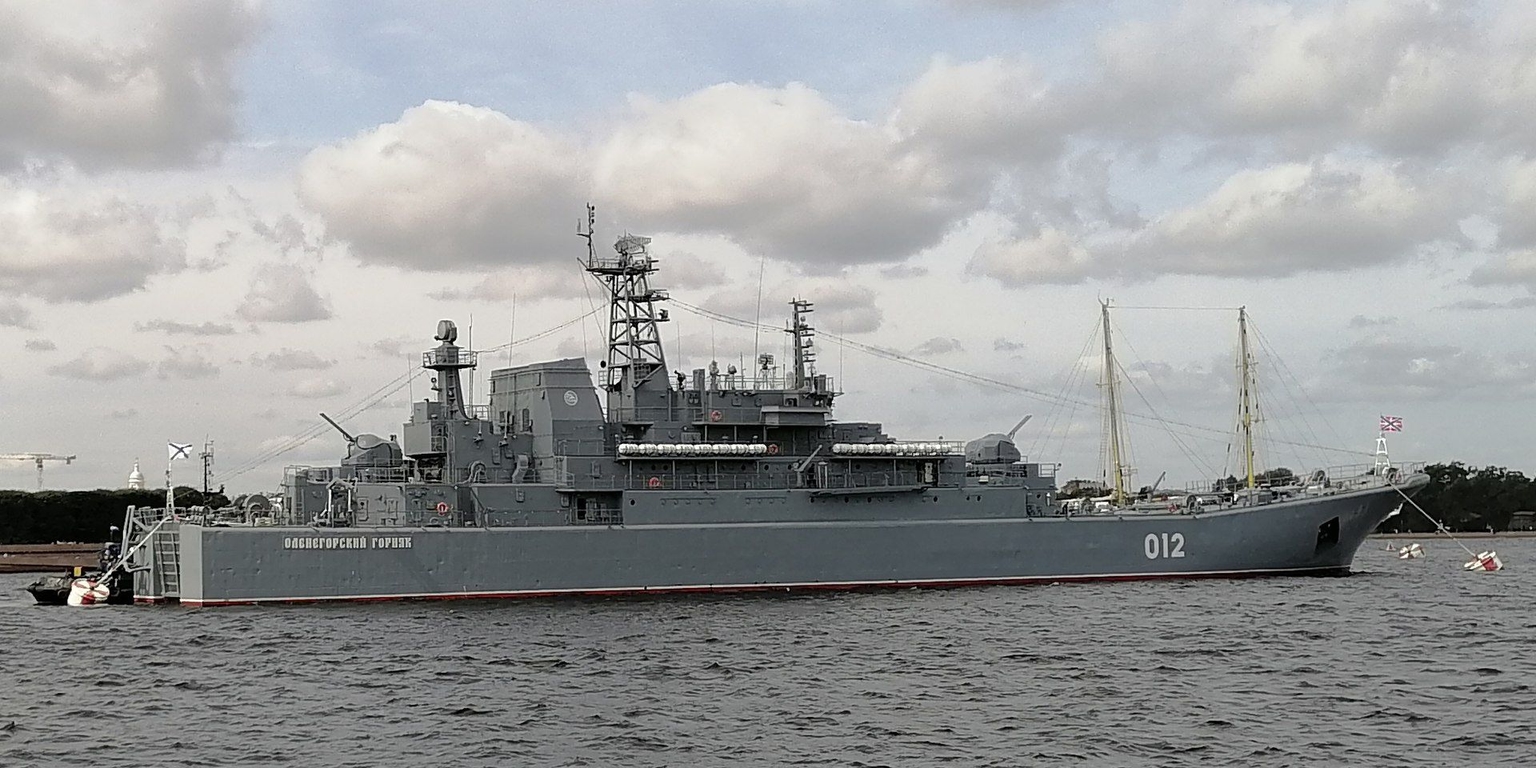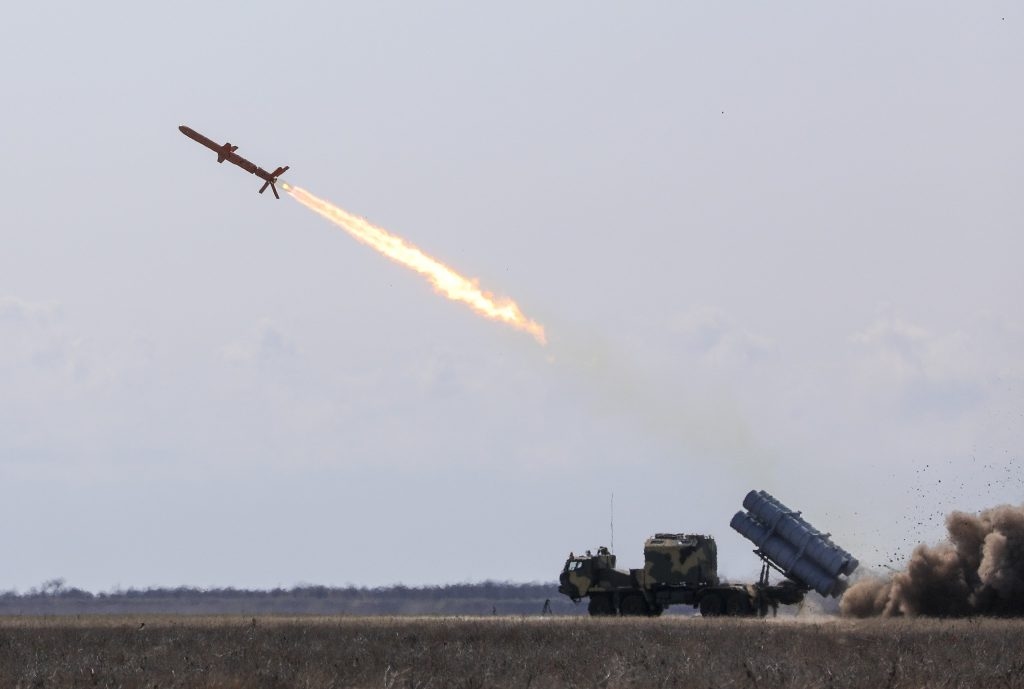These are the most important Russian ships destroyed by Ukraine

Editor's note: The article was originally published on Jan. 30 and updated on March 11 at 4:17 p.m. Kyiv time.
One of the most unexpected developments of the full-scale invasion was how many big, expensive Russian ships were taken out by Ukraine, a country that technically has no navy.
Around 30% of Russia’s Black Sea fleet has been disabled as of early February 2024, according to the Ukrainian military, who said that there had been 74 warships in the fleet right before the 2022 invasion of Ukraine.
Ukraine scored its latest kill, the patrol ship Sergey Kotov, on March 5.
Besides harnessing their Soviet arsenal, the defenders used domestically developed Neptune cruise missiles and cutting-edge naval drones, plus the long-range missiles supplied by allies. As its fancy toys began to dwindle, the Russian navy doubled down on defenses, moving its ships farther from Ukrainian shores.
This allowed Kyiv to continue exporting its agricultural products even after Russia pulled out of the agreement to stop attacking Ukrainian exports in July. Experts have called this one of the main achievements of Ukraine’s attacks on Russia’s navy.
In fact, Ukraine’s seaborne exports of agricultural and industrial goods have already returned to their pre-war level, Volodymyr Zablotskyi, a naval expert at the Defense Express think-tank, told the Kyiv Independent. This is a big deal, considering that the country's ports on the Azov Sea are held by Russia, with only those in Odesa Oblast and on the Danube River still operational.
The Black Sea Fleet had three main jobs during the full-scale invasion: amphibious assaults, blockading trade, and attacking Ukraine with missiles. Now, it can only manage the third one, and even this has become harder, according to Dmitry Gorenburg, a senior research scientist at the U.S.-based Center for Naval Analyses (CNA).
Since Russia moved its warships further east, Ukraine’s air defenses now have more room to intercept sea-launched missiles targeting its cities and infrastructure, he told the Kyiv Independent.
By whittling down the Black Sea Fleet, Ukraine showed that it’s not as invincible as Moscow tried to claim, demoralizing the enemy and exposing their weakness. Here’s a chronological list of the most important ships taken out so far.
The Saratov
The Saratov landing craft was one of the first truly big vessels that Russia lost during the invasion. Ukrainian forces reportedly sank it with a Soviet Tochka-U ballistic missile on March 24, 2022, while the ship was docked in occupied Berdiansk in Zaporizhzhia Oblast. Russia was using the port to supply its troops in Mariupol.
Russia would have needed ships like the Saratov to execute its planned amphibious assault on Odesa to cut Ukraine off from the sea altogether. Moscow was eventually forced to abandon this plan.

According to the Ukrainian military, the attack also damaged two other landing ships docked nearby, the Novocherkassk and the Caesar Kunikov, which the Ukrainians finished off later.
Commissioned in the 1960s, the Saratov was used to support Russia’s operations in Syria and Georgia, as well as the illegal annexation of Crimea in 2014. The ship can carry up to 400 troops, plus 20 main battle tanks or 45 armored vehicles.
The Moskva
The missile cruiser Moskva was the flagship of Russia’s Black Sea Fleet and a proud symbol of Russia’s naval power in the region, until it was sunk on April 14, 2022.
Ukraine said it hit the cruiser with two Neptune missiles, leading to the total loss of the $750 million war machine and an unknown number of casualties from its crew of 500. Russia has tried to cover up their fates and downplay the ship’s significance.
That wouldn’t be so easy. Moskva was the first Russian flagship to be sunk since the 1904-1905 Russo-Japanese War. It played a key role in Russia’s naval assault on Ukraine at the start of the 2022 invasion. It helped provide air cover for other Russian ships in the Black Sea and capture Snake Island.
Famously, it’s the same ship that ordered Ukrainian marines on the island to surrender, only to be given their now-iconic reply: “Russian warship, go f*ck yourself.”
The Moskva’s now-historic destruction was the first major step in eliminating Russia’s Black Sea blockade, paving the way for future Ukrainian success, Gorenburg said.
“The Moskva was most useful as a kind of mobile air defense system,” he said. “By eliminating it, Ukraine made it much more difficult for the Russian side to try to crack coming missiles and threats against other ships.”
The Olenegorskiy Gornyak
With a length of 113 meters and a displacement of 3,600 tons, the Ropucha-class landing vessel Olenegorskiy Gornyak became the second-largest Russian ship to be crippled or destroyed after the Moskva.
Redeployed to the Black Sea in 2022, it often ferried military and civilian traffic between Russia and occupied Crimea while the Kerch Bridge was disrupted due to Ukrainian attacks, according to the U.K. Defense Ministry.
After attacks on Crimea became more frequent, Russia moved the Olenegorskiy Gornyak to Novorossiysk in the Krasnodar region. This didn’t save the ship from a Ukrainian sea drone, which had to travel at least 600 kilometers to deliver its 450-kilogram payload. The attack further degraded Russia’s capabilities to transport military equipment and conduct amphibious operations.

The innovative sea drones developed by the Security Service of Ukraine (SBU) have preyed on the Black Sea fleet since October 2022. The Novorossiysk attack showed that Russian ships are not safe even far away from Ukrainian shores.
Russia moved the Olenegorskiy Gornyak back to Sevastopol in late January, possibly for repairs, according to Pletenchuk. However, the ship is unlikely to become operational in the near future because of Russia's inability to find needed components and electronics for a vessel built in the 1970s in Poland, Zablotskyi said.
The Minsk and the Rostov-on-Don
The Sept. 13 attack that disabled the Ropucha-class landing vessel Minsk and crippled the Kilo-class submarine Rostov-on-Don was also Ukraine’s first successful missile strike on Sevastopol in occupied Crimea.
The missiles targeted the Sevmorzavod shipyard, where the two vessels were in dry-dock for repairs or maintenance. Later, Storm Shadow long-range missiles were reportedly used to strike the Black Sea fleet headquarters in Sevastopol and other Russian military targets in Crimea.
Over a month after the Sept. 13 attack, satellite images showed that the Minsk was dismantled, with Ukraine saying the strike damaged it beyond repair.
The Rostov-on-Don, one of the Russian fleet's four missile-capable submarines, suffered "catastrophic damage," according to the U.K. Defense Ministry, which wrote that any efforts to return it to service would probably take years and hundreds of millions of dollars.
The attack on the Sevmorzavod also inflicted 62 Russian casualties, as reported by Ukraine’s Special Operations Forces, and damaged the facility’s infrastructure, likely leaving it out of action for months.
The Askold
The Askold, a missile corvette built with advanced stealth technology, was destroyed before it even entered service. A Ukrainian attack on a Kerch shipyard likely rendered the vessel beyond repair.
At least three Storm Shadow/SCALP missiles reportedly struck the shipyard located just over six kilometers south of the Kerch Bridge on Nov. 4, 2023, making the attack the "farthest to the east in Crimea than most previous Ukrainian-claimed long-range strikes,” according to the U.K. Defense Ministry.

The Askold was able to carry up to eight Kalibr cruise missiles or Oniks supersonic anti-ship missiles. Its destruction means one less platform for Russia to attack Ukrainian cities, infrastructure, and cargo ships.
The Novocherkassk
The Soviet-era Novocherkassk was designed for amphibious landings, but Russia eventually balked at landing troops in southern Ukraine, instead using it to transport troops and military equipment to the occupied part of Zaporizhzhia Oblast, according to Ukraine’s Air Force spokesman Yurii Ihnat.
Ukraine dropped a cruise missile on the vessel while it was docked at Feodosia in Russian-occupied Crimea on Dec. 26. According to Ukrainian military officials, a powerful secondary explosion suggested that the Novocherkassk was carrying explosives and their detonation made it inoperable, which open-source evidence supports.

Russia tried to downplay the damage and casualties, with Moscow’s top proxy in Crimea claiming that one person had been killed in the attack and four others were injured.
According to an alleged email from the Russian Black Sea Fleet’s press service intercepted by the Ukrainian hacker group Cyber Resistance on Dec. 29, the attack might have killed 74 Russian service members and injured another 27.
The Ivanovets
Russia’s Tarantul-class Ivanovets missile corvette, commissioned in 1989, was designed to destroy enemy ships and provide cover for other Russian vessels.
The Ivanovets rehearsed to fire at cargo ships in the Black Sea after Russia pulled out from the Black Sea Grain Initiative in July 2023 and declared that all vessels sailing to Ukrainian ports would be considered military targets.

Six Ukrainian naval drones struck the Ivanovets near Lake Donuzlav in western Crimea on Feb. 1, after which it sunk due to sustaining "direct hits to its hull," according to Ukraine’s military intelligence agency (HUR). The mission was undertaken by one of HUR's special units, Group 13, using Maritime Autonomous Guard Unmanned Robotic Apparatuses (MAGURA) V5 – multi-purpose naval drones.
Those domestically produced drones have proved an effective weapon against Russian warships multiple times. They can also reportedly be used for surveillance, reconnaissance, detecting and eliminating mines, and search and rescue missions.
The Caesar Kunikov
Before the full-scale invasion of Ukraine, Russia used the large landing ship Caesar Kunikov, built in Poland and launched in 1986, for its military operations in Georgia and Syria. The 112-meter-long ship had a crew of almost 90 and could carry up to 500 metric tons of military equipment and 225 troops, according to the Black Sea Fleet’s website.
The Caesar Kunikov was reportedly used to supply Russian troops in Ukraine with ammunition, including after the 2022 missile attack on the Berdiansk port that damaged the ship, until Ukraine struck again on Feb. 14.

Ukrainian sea drones hit the Caesar Kunikov off of the Crimean city of Alupka, making it the fourth landing ship from Russia's Black Sea Fleet to be sunk since February 2022, as reported by the U.K. Defense Ministry.
Following the destruction of the Caesar Kunikov, the Russian Black Sea Fleet was left with only five operational Ropucha-class landing ships out of a previous total of 13, said Ukrainian Navy spokesperson Dmytro Pletenchuk.
The Sergey Kotov

Russian patrol ship Sergey Kotov, capable of carrying Kalibr cruise missiles and other weapons, was one of the most modern vessels of the Black Sea Fleet, commissioned in July 2022.
Russia built only four vessels of such design, almost all of which were attacked by Ukraine throughout the full-scale invasion. Along with another Russian patrol ship, the Vasily Bykov, Sergey Kotov was first targeted by Ukraine in September 2023 but survived that strike.
In the second attempt to destroy the vessel, five Ukrainian MAGURA V5 naval drones reportedly hit Sergey Kotov in the Kerch Strait, which separates occupied Crimea from Russia, overnight on March 5. Ukraine’s military intelligence agency (HUR) said the $65 million ship had suffered damage to its stern and on its left and right sides and eventually sunk.
At least seven crew members were killed and 27 injured, according to the latest data from HUR, who also said, citing an intercepted conversation, that the Russian patrol ship had a helicopter on board. According to Ukrainska Pravda’s unnamed sources, it was a Russian Ka-29 transport and combat helicopter that was destroyed along with the vessel.

Note from the author:
Hi, this is Dinara Khalilova, the author of this article. I hope you enjoyed reading about Ukraine’s wins in the Black Sea. We need your support to continue reporting on Ukrainian successes on the battlefield and the challenges the country faces in its fight against Russian aggression. Please consider becoming a member of the Kyiv Independent community.
















